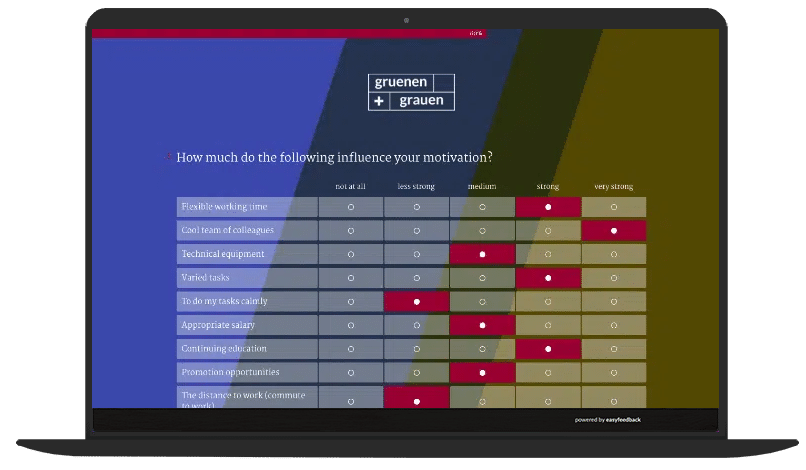What is your goal for 2024?
The first important step is to describe the goal in concrete terms.
This is the only way we can measure the goal in between and at the end. So write down your goal now.
Here are a few examples of possible goals:
Employee Survey
- Reduction of the fluctuation rate by X %
- Reduction of working time by X % from recurring manual activities
- Increase in employee satisfaction (eNPS) by X %
- Reduction of the workplace load by X % in area Y
Customer Survey
- Reduction of the churn rate (terminations) by X % in customer segment Y
- Increase customer satisfaction in the support area by X %
- Increase in total NPS by X %
- Increase in sales of X % in product area Y
It’s okay if the sentence doesn’t sound so elegant. The important thing is that the goal is defined.
Once you know where you want to go, you now need to find out what you need to change in order to achieve your goal.
So you need measures that you will implement.
However, in order to get the measures, you first need to get to know the factors influencing your goal better.
- What can influence the achievement of your goal – positively and negatively?
- A higher budget?
- Poor communication in projects?
- Too little flexibility in the company structure?
- Colleagues who don’t have the necessary know-how?
There are many possible influencing factors that have kept you from your goal so far or are not even known yet.
And here we come to the part where easyfeedback can help you: You need a suitable questionnaire to find out why your current status does not match your goal.
Based on your goal, you need feedback to eliminate the negative influencing factors and achieve your goal. Let’s take the following example:
"We want to reduce employee turnover throughout the company by 20% in 2024"
This is a very clearly formulated goal.
There are various reasons why employees change jobs.
In general, however, it can be said that the employees were not satisfied with their job.
It was either the area of responsibility, the salary, the management style or the way they worked together. If we now want to reduce staff turnover, we need to find out the reasons in order to develop measures.
In this example, two surveys are suitable: 1. an exit interview of every employee who has resigned 2. a survey on satisfaction and employee motivation
The exit interview provides us with direct feedback as to why the employee resigned.
As this can be super individual and does not happen every day (an employee leaving), we use the second interview to
a) verify the result from the first survey and
b) and to get an overall picture.
The right questions for your goal
Now that we know where we want to use the survey, we have already established the topic for the questionnaire and can now continue with the targeted questions:
1. Exit interview
An exit interview is usually not personalized.
This gives the departing employee the opportunity to give “honest” feedback.

Nevertheless, we need to be able to assign the feedback and therefore ask for the location, department or team in which the person worked.
The next option is a matrix question.
Here, the departing employee can express their satisfaction in individual areas. From this, we can then see where the reasons for leaving came from.
So we ask about specific topics such as: Internal communication, cooperation with the line manager (technical) equipment at the workplace, freedom to make decisions about tasks, salary, etc.
We then ask for the direct reason for termination:
- received a better offer
- no promotion opportunities
- better equipment
- more freedom of choice
- health reasons
- etc.
And finally, we add a free text field and ask for improvement options or whether the departing employee would like to leave us anything else.
The text field will help us to better understand the reasons. Because here the person can formulate freely.
2. Employee motivation
With the survey on motivation, we specifically address the points that motivate an employee in the performance of their job.
The questionnaire is somewhat more specific – but also goes to all employees, so that we receive feedback from employees with high, medium and low satisfaction.
It is important here that we include the question about recommending the employer (eNPS) at the beginning. This serves us later as a filter question to classify the feedback according to the level of satisfaction.
You can view the questionnaire here.

All important satisfaction issues are identified and which positive aspects are already present in the company.
Conclusion
With these two questionnaires, we can now determine where dissatisfaction arises in the company and, based on this, develop measures to increase satisfaction and ultimately reduce the fluctuation rate.
These are your to-dos now.
In the next newsletter, we will set up and launch the surveys.
And if you would like us to provide you with comprehensive support for your goals, just get in touch.
With easyfeedback’s “Performance Consulting”, we integrate the feedback loop into your company and tackle your goals together.


